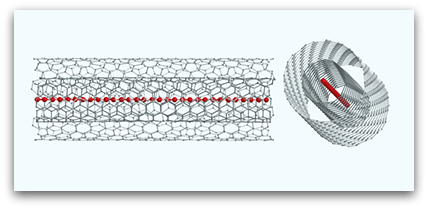The exploration of novel materials that exhibit extraordinary physical properties has been a hallmark of modern materials science. Among such compounds, carbyne has garnered considerable attention due to its remarkable characteristics. Promoted as a contender for the title of the strongest material known, carbyne presents an intriguing topic for discussion: could there exist a material even stronger than carbyne? This inquiry not only sparks curiosity but also delves into the essence of material science itself, raising questions about the limits of strength and the potential for yet undiscovered or synthesized materials.
Carbyne, a linear allotrope of carbon, boasts an impressive one-dimensional structure comprising alternating single and triple bonds. This unique arrangement grants it exceptional tensile strength and rigidity. With theoretical strength estimates surpassing those of graphene and carbon nanostructures, carbyne exudes a charisma that captivates scientific discourse. Yet, the very nature of scientific advancement invites scrutiny—what barriers exist, preventing us from identifying or synthesizing materials that can outperform carbyne?
One fundamental aspect influencing material strength is atomic arrangement. In materials science, the maxim that “structure dictates properties” holds significant weight. Carbyne’s linear configuration allows for a degree of mechanical stability that is unattainable in three-dimensional structures. However, the question remains—are there versatile atomic configurations that may offer a combination of strength and flexibility, potentially eclipsing carbyne’s prowess?
To investigate this notion, one can consider the structure of carbon allotropes, such as graphene and carbon nanotubes, which exhibit remarkable tensile strength due to their hexagonal lattice arrangement and cylindrical geometry, respectively. The seamless continuity of their carbon-carbon bonds contributes to their strength, yet they retain a certain flexibility that carbyne lacks. These characteristics raise the possibility that hybrid structures or advanced composites could emulate the best traits of established materials while surpassing carbyne in sheer strength.
Moreover, researchers have been exploring materials synthesized through top-down and bottom-up approaches, revealing a vast, untapped landscape of potential. For instance, metallic hydrides and transition metal dichalcogenides have emerged as striking candidates, with their layered structures capable of undergoing significant transformations under mechanical stress. Herein lies a fascinating avenue: could materials engineered at the nanoscale approach or exceed carbyne’s theoretical limits while maintaining functional versatility?
The phenomenal strength of carbyne is also intricately linked to its electronic properties. The electronic band structure plays a critical role in defining the mechanical behavior of materials. In this context, the concept of elasticity becomes paramount. Traditional materials often experience strain hardening— a phenomenon whereby materials become stronger as they are deformed. However, unconventional materials like certain complex oxides can exhibit negative Poisson’s ratios, leading to auxetic behavior where materials expand laterally when stretched. Such extraordinary mechanical responses might serve as a pathway to uncover materials that not only equal carbyne’s strength but also offer additional functionality.
Additionally, researchers have embarked on explorations of metamaterials, engineered to possess properties not found in nature. These ingenious designs manipulate structural features on infinitesimal scales, resulting in materials with extraordinary strength-to-weight ratios and unique mechanical properties. The iterative processes through which these materials are developed suggest that the pursuit for a material exceeding carbyne may rest upon manipulating the metrics of strength itself, rather than relying solely on atomic composition.
Chemistry also plays a pivotal role in material advancements. Innovations in chemical synthesis techniques, such as the utilization of advanced catalysts and innovative polymerization methods, have yielded a host of novel compounds that hold promise. For instance, researchers have synthesized polymer networks that exhibit superelasticity and self-healing properties while maintaining remarkable tensile strength. These features propose a compelling perspective on how materials might evolve—by intertwining innate strength with capacity for self-renewal, thereby challenging the conventional narrative of sheer strength as the ultimate benchmark of material excellence.
Furthermore, biological materials reveal another layer of insight. Nature has perfected numerous compounds that blend strength and resilience—examples include spider silk and mollusk shells. The underlying architecture of these biological entities serves as inspiration for synthetic materials. It becomes apparent that by delving deeper into biomimetic design, we increase the potential for discovering or developing materials that could surpass carbyne’s impressive metrics. Such biomimetic endeavors underline the importance of interdisciplinary approaches in the quest for stronger-than-carbyne materials.
As we contemplate the myriad paths towards material innovation, it is essential to acknowledge the role of computational modeling and simulations. With advancements in machine learning and artificial intelligence, predictive algorithms can analyze vast datasets, leading to the discovery of novel compositions and structures that hold the potential for unprecedented strength. The fusion of advanced computational tools with experimental frameworks amplifies the search process in promising directions, potentially culminating in breakthroughs that may redefine our understanding of material limits.
In conclusion, while carbyne remains a formidable champion in the realm of materials science, the quest for a material surpassing its performance is both plausible and pregnant with excitement. The interplay of atomic structure, innovative synthesis, technological advancement, and inspiration from nature signifies a dynamic landscape ripe for exploration. Should we unearth a material that not only challenges but exceeds the attributes of carbyne, it would not only broaden the horizons of material science but also catalyze a new era of applications across diverse fields. As researchers, engineers, and scientists continue their relentless pursuit, the enigma of stronger-than-carbyne materials endures, inviting generous conjecture and instigating further inquiry into the limitless potentials of material advancement.












